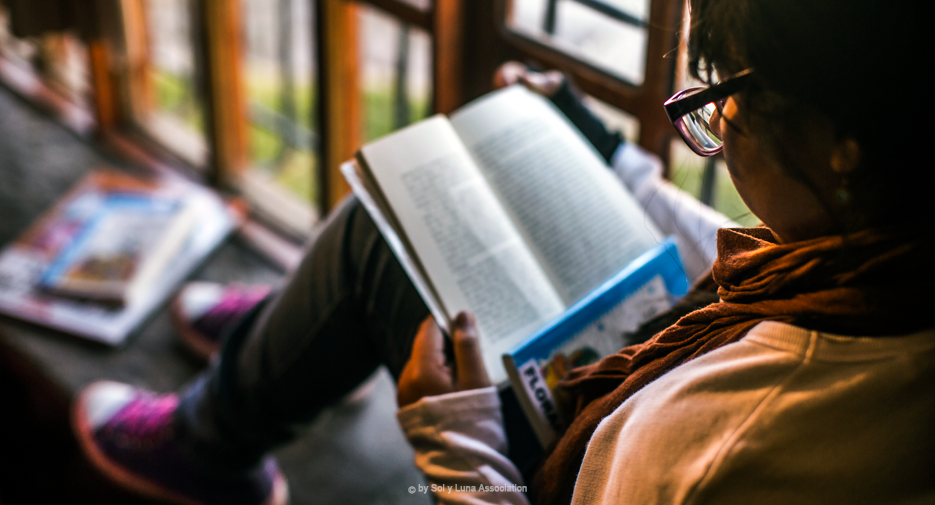
“Education is everything. It doesn’t matter what color your hair is, your race, how much money you have, who your parents are. It’s every child’s right. Without it, there’s no future nor change”. –Petit Miribel
Meet Marie-Hélène Miribel—also known as “Petit”. Along with her husband Franz, she’s the founder and owner of Hotel Sol y Luna in Peru’s Sacred Valley. Just outside the town of Urubamba, this idyllic property is surrounded by the towering Andes which cast their magnetic presence onto the town below.
Sol y Luna was one of the first hotels in Sacred Valley to be built—long before the boom of tourism swept through the area. Now a member of the luxurious Relais & Chateaux chain, it has long been a favorite of ours in Peru for both its excellence as a hotel, the amazing (organic) food, but most importantly, the community it has built around a special school: Colegio Intercultural Sol y Luna.
First, let me take you there to envision the place. Imagine ornamental gardens full of native trees, plants, and flowers. Stone paths meander through these wild, yet highly maintained, gardens to the handsome low-slung wooden and stone villas. As you walk through the property, the sun and shadows change throughout the day. The relaxing sound of trickling water flows as it moves through one of the many irrigation channels.
Around you, the Andes rise. In the spring, they take on a greenish hue with moss growing from the abundant summer rains. During winter and the drier months, they are jagged and barren with exposed granite and glaciers in the peaks. Since the time of the Incas, and for much of eternity, they have looked down on the Sacred Valley, and now Sol y Luna, like wise sages.
There’s a unique energy to this place that feels invigorating and positive. Perhaps it’s the thinner atmosphere at these altitudes (8,500+ feet), but I think it has to do with the love and passion that Petit and her husband have infused into the hotel, the community, and the children. It’s tangible.
Sol y Luna has certainly been a pioneer in the hospitality industry and tourism in Peru. However, at the level of contribution, I feel what they are doing is so noteworthy and truly changing lives. They are shaping the future of a community and this is vital to share—and support.
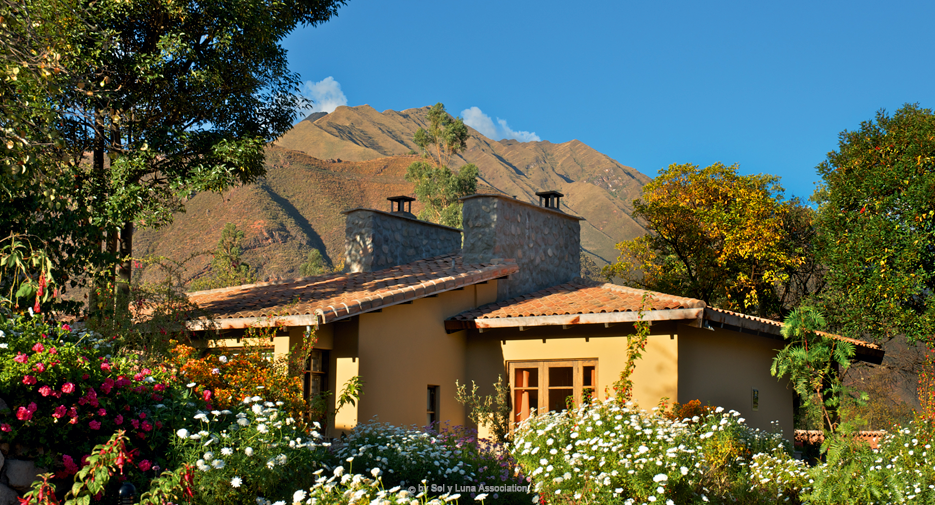
I spoke with Petit about the school and her drive to make a difference in the lives of these Sacred Valley children. I was curious… what was her why? My intent is to transmit her love for this place, these children, the school, and in that process, we can all learn and be inspired from her. We have it in us to step up to help. We are all here to help other people so they can help other people. Perhaps you feel called to support this project, or start one like it in your own community. This piece is about caring, humanity, and ultimately, love.
How did you arrive Peru? You are from France and your husband from Switzerland.
We met in Peru while working in the mining industry in Lima during the early 1990s—right after the terrorism issues had been normalized. We realized that we wanted a better quality of life than in Lima. We wanted to live in a place in harmony with the way we want to live and those values. We had an intense desire to start a project that would serve the people. We needed to create something. At that time, tourism in the Sacred Valley was virtually non-existent so it seemed like the perfect place.
Describe Sacred Valley at the moment you arrived. How was access to education, the standard of living, and tourism? Why did you decide to invest in the hotel and start the school?
We arrived in 1998 in Urubamba at our present site. At that time, we were outside town and there was barely even a road. Just nature. Urubamba was not a town like it is today. It was a village. While Machu Picchu is a huge draw for visitors from around the world, Sacred Valley is still a very undeveloped, poor area where many live in extreme poverty and survive on subsistence farming. Thus, schools were something from last century—basic constructions and little resources to sustain them.
We never anticipated becoming the luxury hotel we are today. Neither Franz nor I came from the hotel industry. We had come to Sacred Valley for a different pace of life—more holistic. We got the hotel going and just tried to do our best. This was before our children were born so we had no responsibilities other than own lives. So we built this hotel tucked away off the road that when you opened the doors, you walked into this gorgeous garden. Guests loved it. They would come maybe 3 nights at the beginning… today they return and stay 4, 5, 6 nights. It wasn’t just a place to pass through en route to Machu Picchu. It was a destination, a special place, for them to relax, appreciate nature, and be more in touch with the local culture which has been largely untouched for centuries. The project really grew organically. We listened to what guests needed—new villas/rooms, another restaurant (Wayra), a new pool in 2016, for example.
What inspired you to start the project? What was your vision?
I remember being a teenager and being shocked by the poverty in the world. Having been born and raised in France with a decent life, I couldn’t fathom how you could turn on the TV and see all these disasters. I just couldn’t understand it. I would say (to my family), “I have to do something”. I wanted to go and help but I knew I would be useless. I first had to study and gain more life experience. Then I could start a project to grow and contribute.
The project started with a profound belief that all children have the same right to get ahead in life and to receive a good education. How can you ever change a place and include people if you exclude them from the beginning? Thus, we envisioned an intercultural, multi-lingual school that would welcome all people, all races, and all social classes. It would be based on inclusion rather than exclusion. It would be an open model rather than a who-can-pay model.
We saw that many families in the Sacred Valley do not send their kids to school since they are “hands”, i.e. manual labor, in the fields. Many parents themselves never went to school or only a few years of primary school, so in many cases there is little value placed on it. As for disabled children, most of them are never provided any education whatsoever.
While we knew we could make money with the hotel, and it’s perfectly fine to want to make money, there’s also a limit to how much one truly needs to live well. So we thought, how can we use the hotel to grow this project and create a community around it.
How did you get the hotel off the ground and fund the school?
We first created the Associación Sol y Luna over 20 years ago to support the local schools. This was the starting point. We used profits driven by the hotel to give back to them. However, we experienced so much frustration in working them since they let the hotel buy anything they needed, but never gave any importance to our opinion. They weren’t interested in motivating nor teaching in a different way, they just saw us as a bank to finance them. Thus, we quickly tired of this scenario and knew we needed to create our own school where we could assure the quality and kind of education the children really needed. Besides the learning, we understood that creating a safe, supportive and joyous environment for them was key. With that vision, we started the Colegio Intercultural Sol y Luna nine years ago. That’s when we started to see a real change.
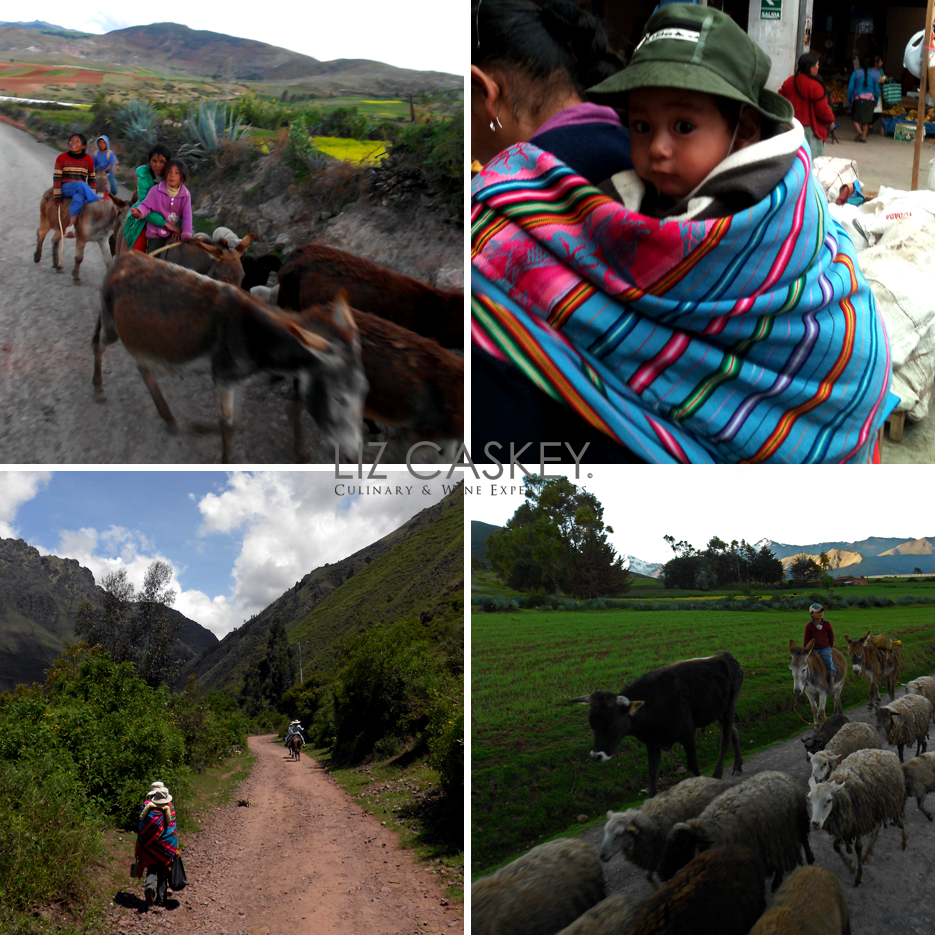
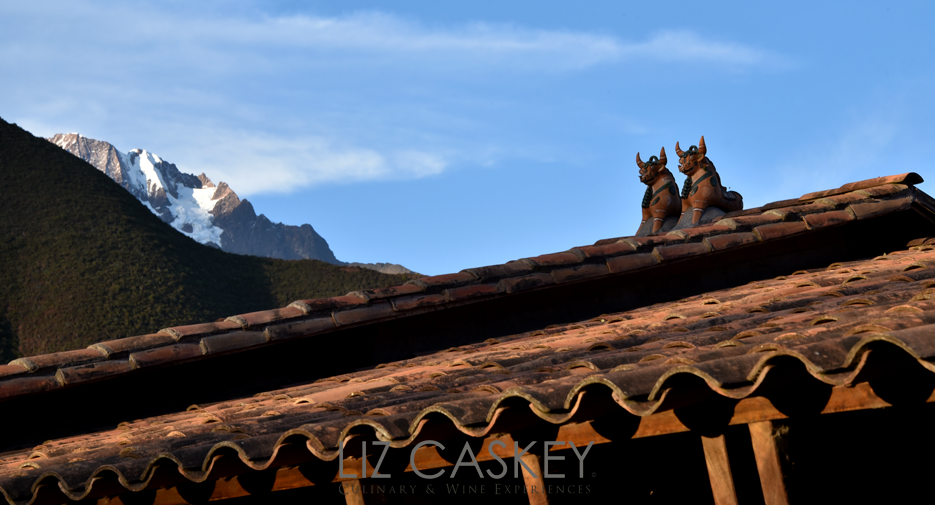
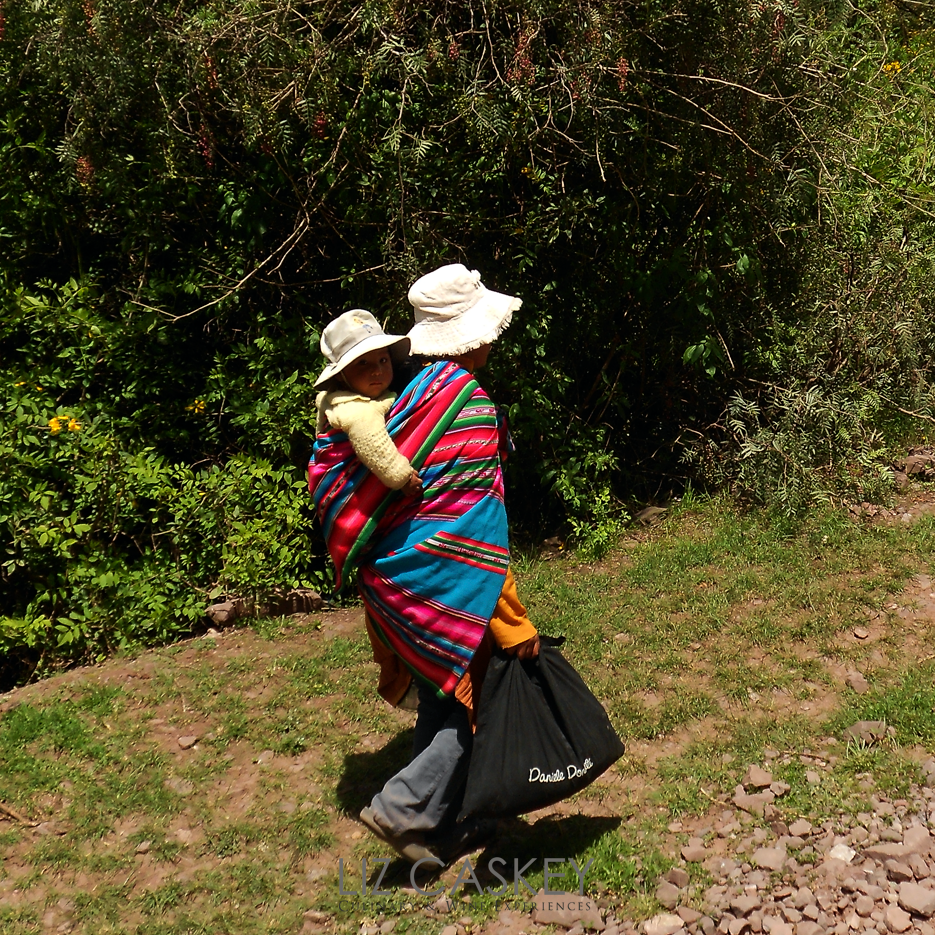
Describe the school today and its students. How has this education made an impact in these students’ lives?
Today, we have 224 children attending the school—and it’s not a just a school for poor children. As we are open to an equal education for all, we do have eight paying students. For example, we pay for our own (two) children to attend. This being said, the majority of the students at the school are enrolled on full or partial scholarships (50% pay nothing, 50% partially financed).
The school has grades K-12 with its first graduating class in 2017! Some of the students are attending the University of Peru and others continuing with local technical programs. English and Spanish are taught at the school in addition to French. Besides the classes and activities, the school provides nutritious meals (breakfast and lunch) to all students daily. We also have many other resources that are unparalleled locally such as two libraries (one in Spanish and one in English), psychological services for the children and families, physical therapy for the disabled among other services that provide a holistic education.
Many children live very far away where they would have to walk five hours each way, each day to school. We have a foster home set up where children stay during the week to attend the school. Kids return on the weekend to work in the fields and help their families—which can often be a riveting experience. They yearn to be at school, which is an oasis for them. Many children come from very poor backgrounds where raging violence has been damaging to them. Often our role is not only to provide support to them, but also to their families. We help rebuild lives and open up awareness as to how education is positive for both the child and the family.
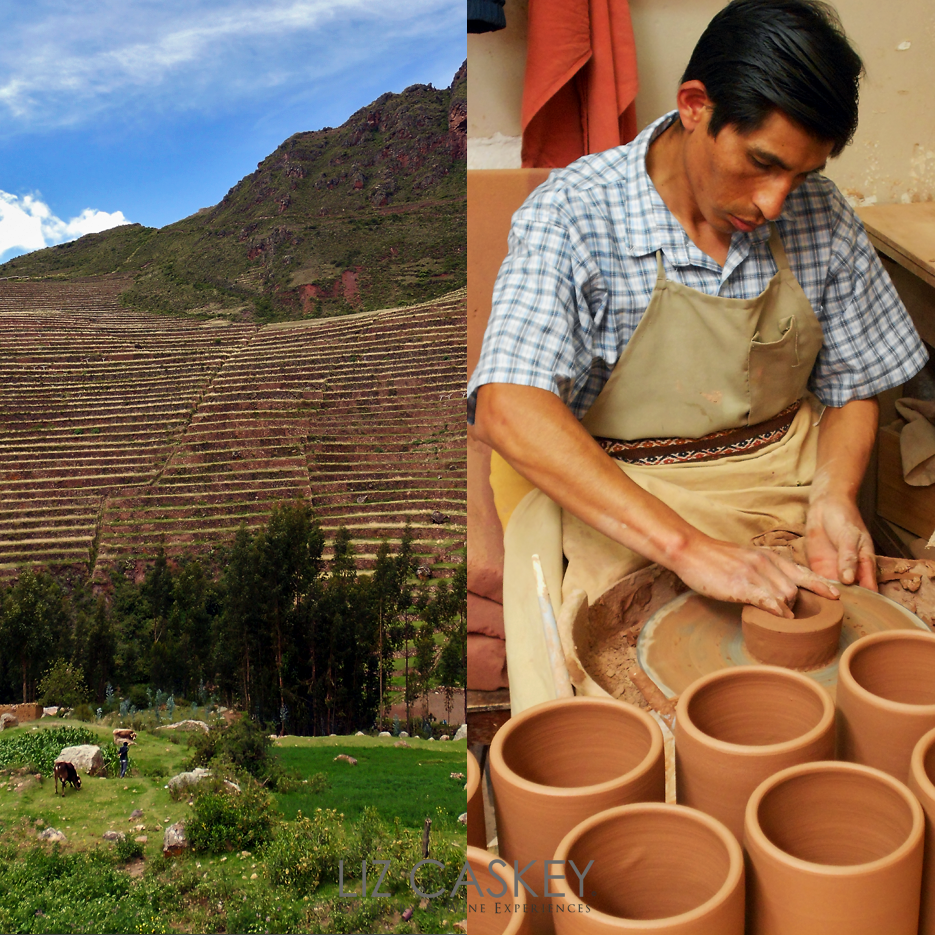

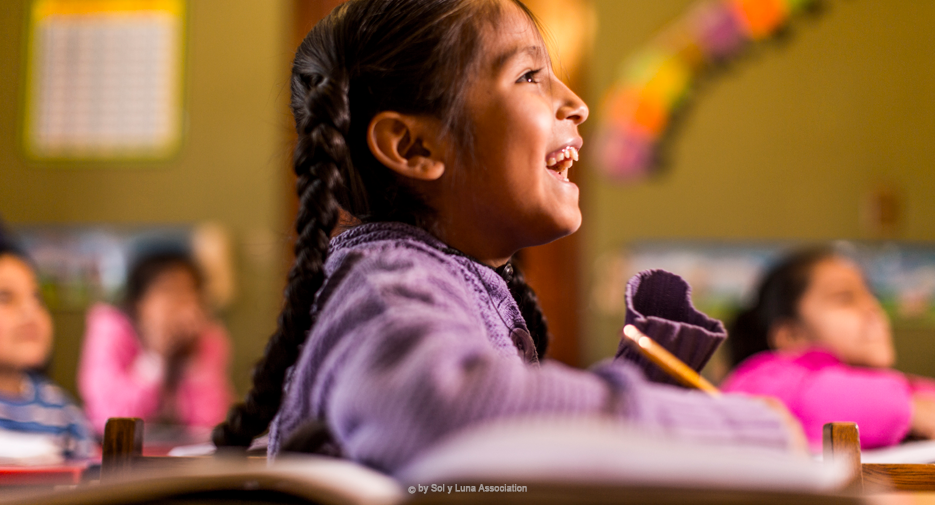
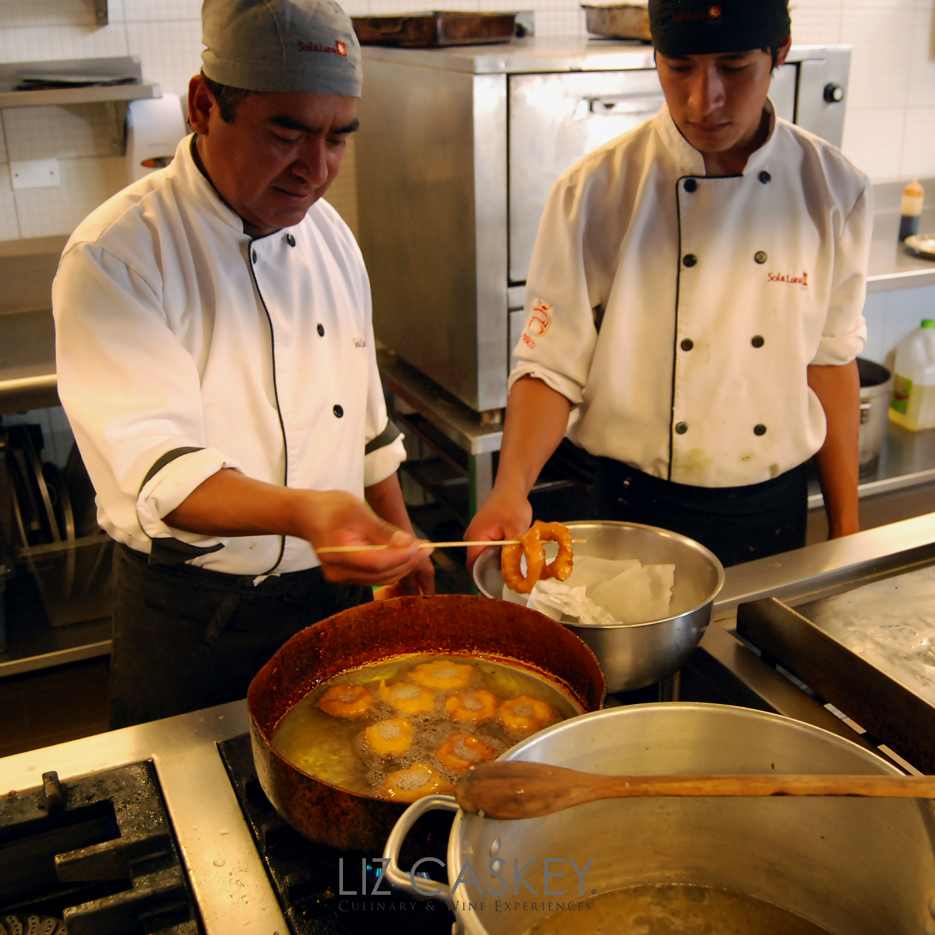
How is the school supported and funded?
We use proceeds of the hotel to support the school in addition to many donors who currently contribute each year. As the project has grown, so have the costs to support it. This is particularly true because most students attend free of cost or only with partial pay. There is significant cost with all the necessary resources, food, and of course, the amazing teachers. We have really honed in on bringing in top-notch teachers who are aligned with our purpose and believe that all humans are equal. In the cases of disabled children, we have been able to help and receive more of them, and aid their families, too. This is a community effort since it’s not only the kids we have to support—it’s educating the families, too.
We created a sponsorship program that allows many of our travel partners and donors, both in Peru and abroad, to “sponsor” a child for the school year. For US$3,700 annually, we can cover all the costs of a student (tuition, housing during the week, food, transportation, clothing, some medical care). This has been a wonderful way to engage our partners and even hotel guests with our mission and purpose. It’s more than travel and more than the hotel—there is a true purpose behind what we do.
What has been your biggest challenge to date? How about the most rewarding aspect? Do you feel this is your calling?
The outpouring from the community and visitors from around the world has been encouraging. However, as this project grows, there is truly a great need for people and organizations around the world to pitch in financially and help the school in this beautiful, developing region. Shifting the perception of education with parents can often be a challenge. Accessing education for these kids is a luxury, but it is possible.
As for the most rewarding aspect, to be honest, I feel I receive so much more from the children than what I give. What I get from the kids every day is love, energy…life! They are my motivation. They are my life. I know the story of each and every one of them–where they come from, their troubles and joys.
I believe we have a reason to be here on earth. We can be more. Education is the way. They can learn English and work proudly in tourism here–in their home town, in their country. They can go out into the world as a guide, a teacher, anything they can dream. We want to give these children the opportunity so that they can truly have a different tomorrow.
As you can see, Petit is a living example of dedication to others and giving the gift of education to expand, live positively, and see the world through different eyes.
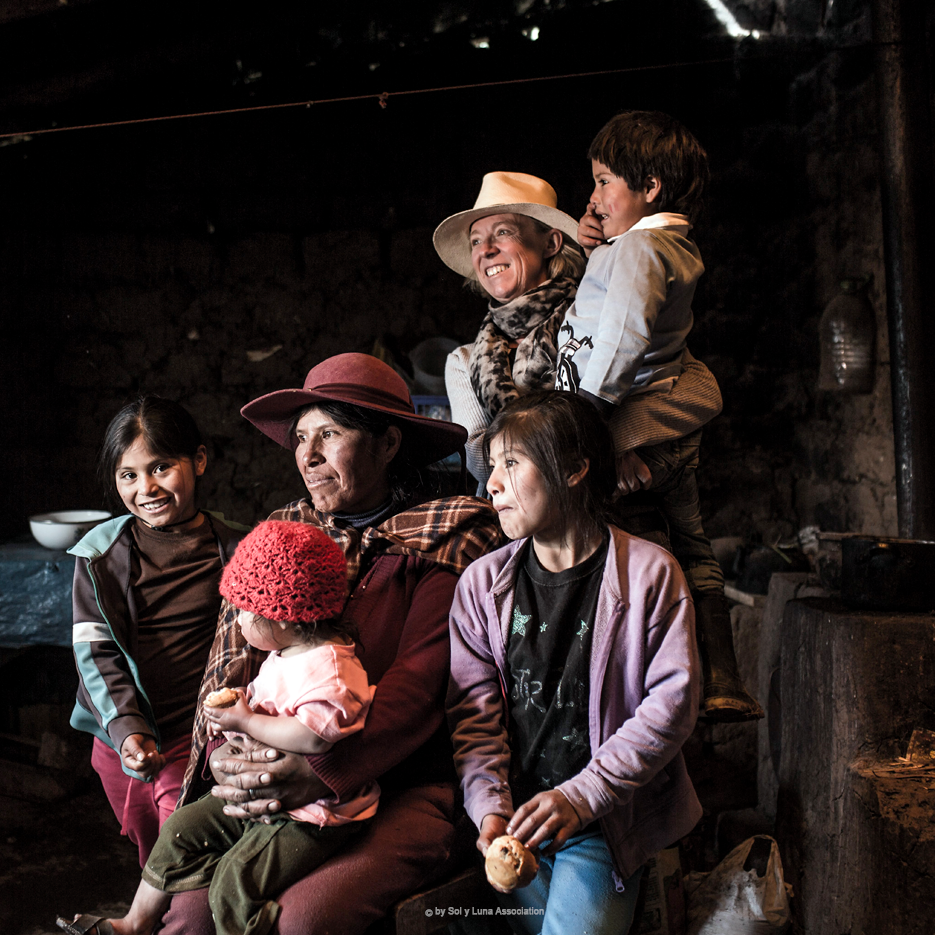
If you are Peru bound, and/or traveling with us there or on our upcoming Flavors of Peru trip in October, and would like to visit the school for a tour, please contact us. If would like to sponsor a child (either fully or partially) and make a direct difference in a his/her life, please contact Petit directly at the Sol y Luna Association.












